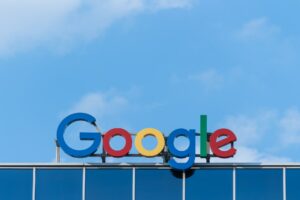Decoding the science of online advertising can seem like an intricate task, primarily due to the fact that Google does tend to update its policies regularly throughout the year. When it comes to PPC advertising, many businesses struggle around the question, “How many ads should be implemented per ad group?” This fundamental decision holds considerable sway over the success and efficacy of an advertising campaign – and we’re going to help you work through this question in the following blog – so let’s take a look!
Understanding your Google Ads campaign
To start, it’s pivotal to comprehend the structure of an online advertising campaign. Think of it as a tree, with the campaign as the trunk, ad groups as the branches, and the ads themselves as the leaves. Each ‘leaf’, or ad, within an ‘ad group’, targets a specific set of keywords relevant to your product or service. The careful coordination and organization of these components significantly impact the return on investment (ROI) from your advertising campaign.
So, how many ads per ad group?
least three ads per ad group. This leads us to the question: why is creating three or more search ads per ad group a best practice?
The magic number three is backed by a strategic rationale, and it has been observed that the presence of at least three ads in an ad group optimizes performance through better ad rotation. Ad rotation refers to how frequently different ads are shown in relation to each other within a particular ad group. When you have three or more ads, Google’s machine learning algorithms can accurately analyze performance data, auto-optimize the ad delivery, and ensure that the most effective ads are shown more often.
It’s important to remember, however, that adding more ads to an ad group is not about mere multiplication; it’s about diversification. Each ad should provide a unique angle, a different value proposition, or a varied call-to-action to cater to the diverse interests of your target audience. This approach maximizes the chances of hitting the right chord with potential customers.
An important aspect to also note is that the number of ads per ad group also impacts your control over testing and optimisation. When considering how many ads should be in an ad group, marketers need to strike a balance between variety and manageability. While it’s important to have a diverse range of ads to cater to different segments of your target audience, having too many ads can dilute impressions and make it harder to gather statistically significant data for each ad. This could, in turn, hinder your ability to evaluate and improve ad performance.
Optimizing Your Ad Strategy: A Step-by-Step Guide
Optimizing your ad strategy is a continuous process that requires careful planning and data-driven decision-making. Here are five key steps to enhance your approach:
Understand your audience
A successful ad strategy begins with a comprehensive understanding of your target audience. Who are they? What are their pain points? What motivates them? The answers to these questions can shape the creation of effective ad copies and selection of keywords, aligning them with the interests and behaviors of your prospective customers.
Create compelling ad copy
Once you have a grasp on your audience, turn your attention towards creating compelling ad copy. Your ads should captivate viewers, clearly convey the unique selling points of your product or service, and encourage them to take action. A well-crafted ad copy is essential for improving click-through rates and driving conversions.
Use A/B testing
A/B testing, or split testing, is a powerful marketing tool to determine what resonates best with your audience. This involves creating multiple versions of your ads with slight variations, such as different headlines or call-to-action phrases. Over time, you’ll gather data about which versions are performing better, allowing you to refine your ads and maximize their effectiveness.
Leverage automation and machine learning
Make use of automation tools and machine learning technologies available on platforms like Google Ads. These can help optimize your ad rotation, bid strategy, and audience targeting, taking the guesswork out of ad strategy optimization and freeing up your time to focus on other areas of your business.
Regularly review and update your strategy
Stay proactive in reviewing and updating your ad strategy. Market trends and customer behaviors continually evolve, and your ad strategy needs to keep pace. Regularly check the performance metrics of your ads, and don’t be afraid to experiment and make changes based on the data you collect.
Hiring a Google Ad agency: a strategic advantage
For businesses looking to maximize their online advertising efforts, hiring a Google ad agency can be a strategic advantage. An agency can provide expertise in creating and managing effective ad campaigns, freeing you from the complex nuances of Google Ads. Ad agencies typically have a deep understanding of how the Google Ads platform works, including its latest features and algorithm changes. They can also help you create compelling ad copies, select appropriate keywords, organize your campaigns into logical and effective ad groups, and optimize your bidding strategy.
Beyond just creating and managing your ads, an agency can offer top-of-the-range ecommerce PPC marketing services, while also providing valuable insights into your campaign’s performance, leveraging their experience and analytical tools. They can perform comprehensive data analysis and offer recommendations for improving your ads, based on performance trends and industry best practices.
In addition, an experienced ad agency can provide end-to-end services, including landing page optimisation, conversion tracking, and ROI analysis. These services can help you align your Google Ads strategy with your broader marketing goals, ensuring that your online advertising efforts contribute effectively to your business’s success.
The bottom line
Ultimately, an optimal ad strategy is not static; it’s a fluid construct that continually evolves based on changing market trends, consumer behavior, and business goals. It also encompasses a good understanding of the target audience, strategic use of keywords, the quality of ad content, and efficient A/B testing for success. The role of a Google Ad agency can be instrumental in this respect, as they bring expertise and experience to the table, guiding businesses to maximize their ad campaign’s ROI.










